In the middle of the Shropshire Hills about half way between Ludlow to the south and Shrewsbury (county seat of Shropshire) to the north, is the attractive market town of Church Stretton (never to be confused with All Stretton or Little Stretton). High above the town on the slopes of Stanyeld and Bodbury Hills is the golf club. The house is about 750 feet above sea level and the course climbs to a height over 1200 feet. Despite the sometimes arrogant nature of humans, I think most would agree that there are occasions at Church Stretton where yes, Orwell's proclamation of four legs good and two legs bad holds true.
Just shy of 1900 the course was originally laid out by Jack Morris of Hoylake fame and Carnoustie export, James Hepburn, who acheived some success as a pro. Church Stretton is littered with Victorian remnants of this original design. Many cross cops and bunker pits squeezing the fairway remain. Vardon and Braid later made some alterations to the course, I suspect mainly to remove much of the penal elements of the earlier design. What remains is an ingenious routing over some of the most difficult golfing terrrain I have ever encountered while on foot. Essentially, the course plays over and around several steep ravines cutting up hillsides. As at Kington, there is virtually no fairway shaping. Unlike Kington, the greens are more or less shaved areas of grass. As the course mainly rests on National Trust land there is very little in the way of maintenance. In the main, sheep cut the grass and much of the time the club relies on mother nature to provide the rain. For those who are hung up on numbers, I will provide the vitals now so you can decide if it is worth reading this review. From all the way back the course measures a hefty 5030 yards against a par of 66. There are no par 5s and six par 3s. The longest hole tops out at 423 yards. What the vitals don't tell you is the wind can politely be called playful even on a calm day and the elevation change is 450 feet!!!


Predictably, the start of the course is about climbing. What isn't predictable is the opening trio of holes are par 3s. #1 says hello like few openers can; 181 yards up a rather steep bank and into the wind - for most its a driver.
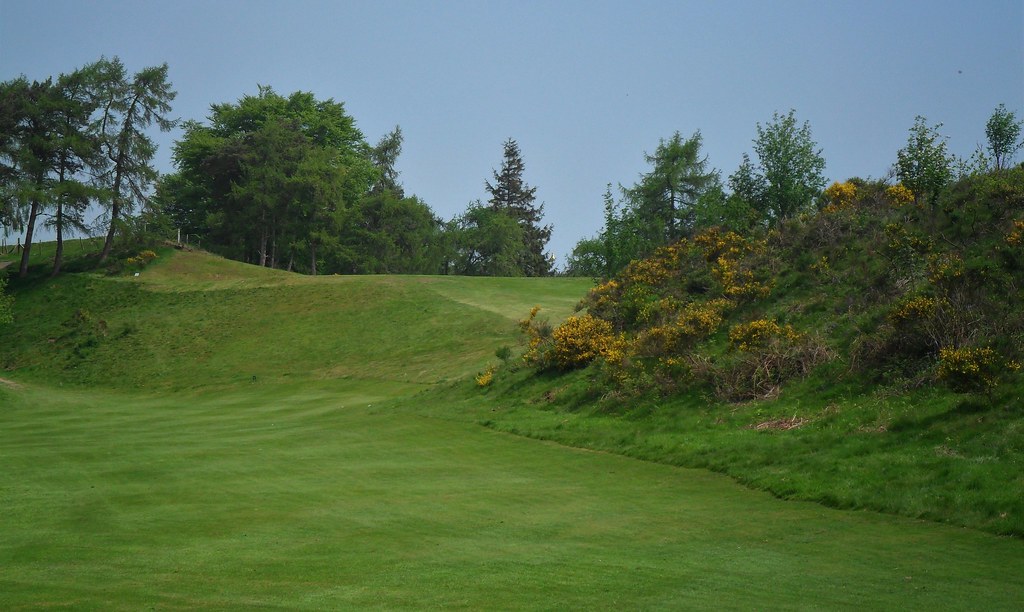
Looking back, this 1910 photo shows the 1st was clearly a two-shot hole. The clubhouse looks basically the same as now!

Many golfers will claim the second is unfair. Another steeply uphill shot, but the tiny green runs away from the tee. Yes, its brutal, but unfair? Not a chance. The yellow flag can just be seen short of the right tree.
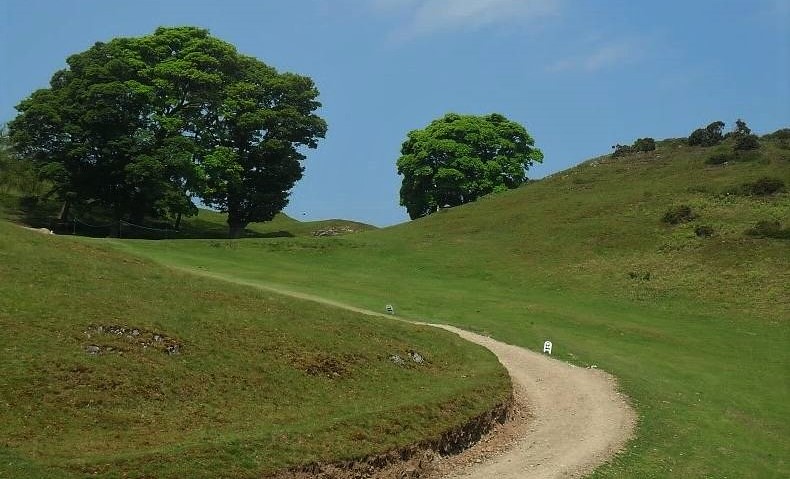

After a climb remninscent of Painswick's 1st, we are near the top of Trevor Hill and at the third tee are greeted by this amusing sign....except the sign was removed!
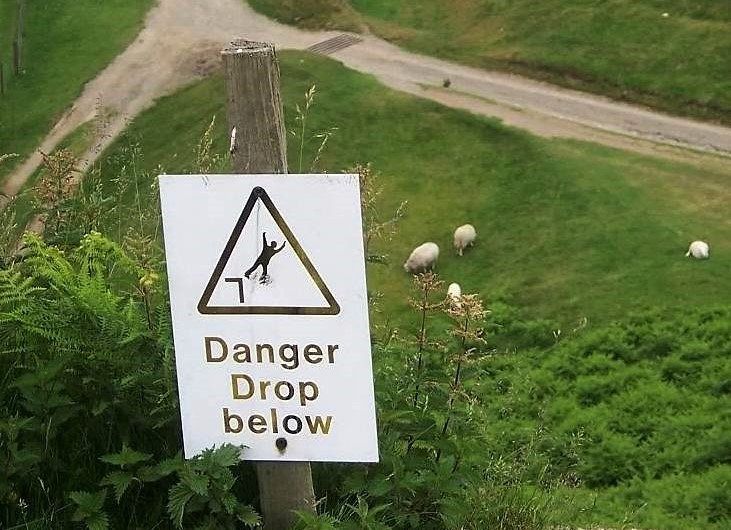
The shot at hand does little to help us regain our composure. As on a few other holes, a tiny sliver of green or flag stick is all there is on display.
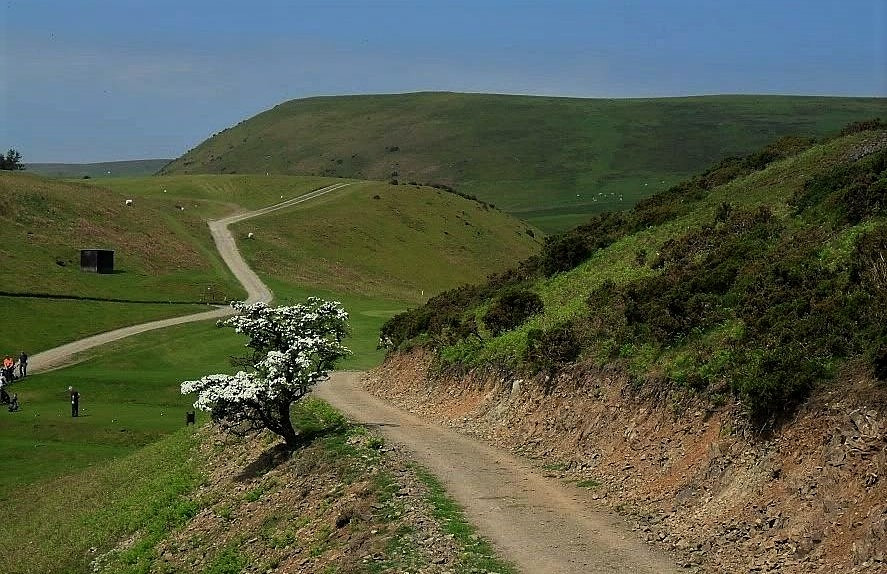
Yet again, this green slides with the terrain away from the tee. Even in the softest of conditions one has to kick the tee shot up or likely send out a search party.

From the 4th tee one can see the full majesty of the greensite set on a wee plateau in a steep valley.
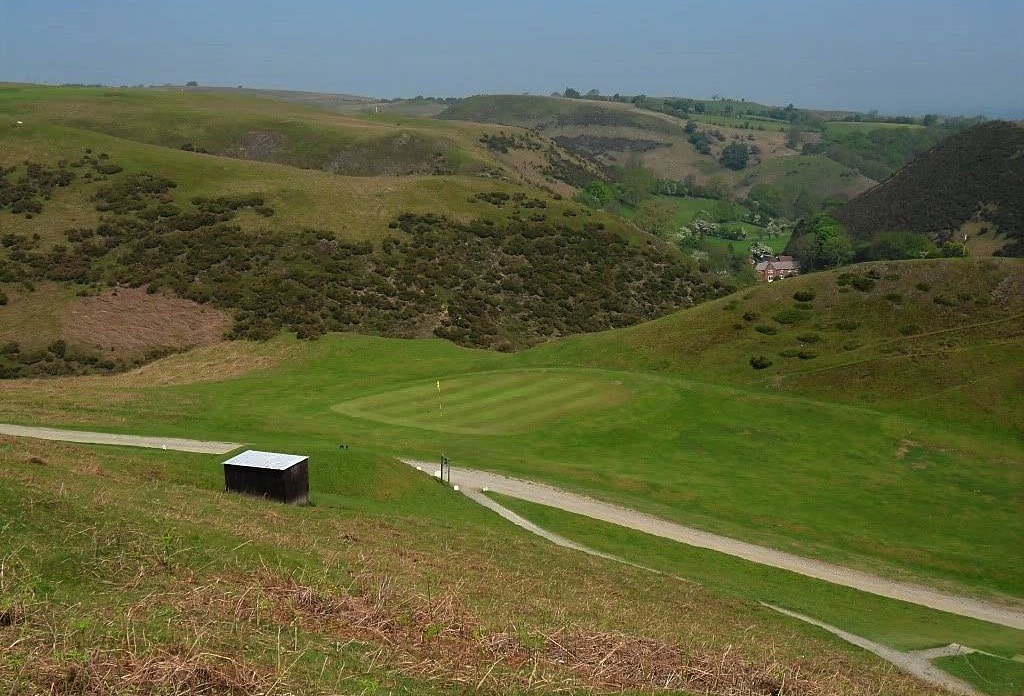
Looking back toward the 3rd tee over the 3rd green and 18th tee.

Naturally, after facing what must make a strong argument for the three funkiest par 3s in succession, anywhere, we now come face to face with Church Stretton's longest hole. However, it isn't the length which causes too much alarm. It is rather the epic nature of the design which takes us tightly alongside the ravine for the drive then over it for the approach. The green can be seen out to the right. I don't believe the original designers had much of a notion that folks would go for this green in two.
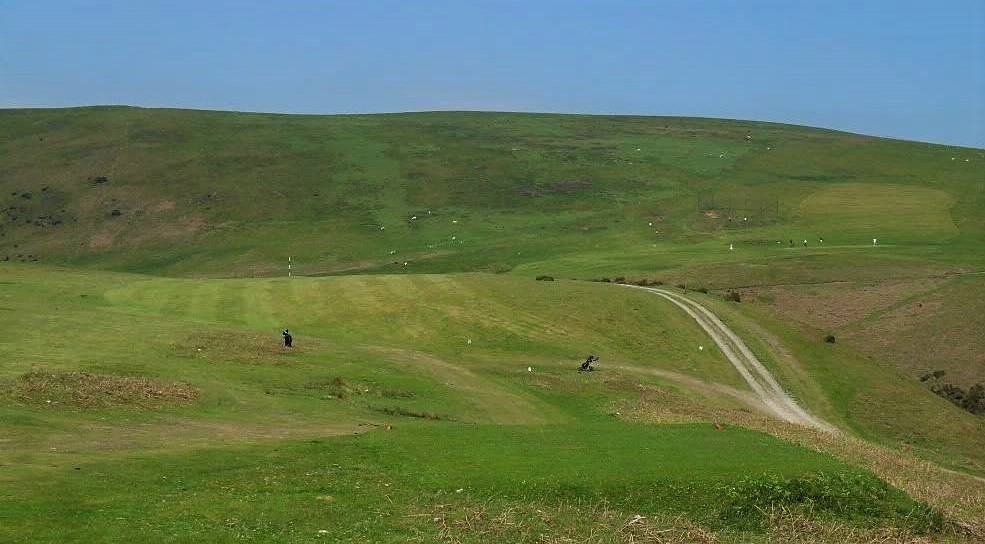
Cutting the corner. The hole barreling down the hill on the right is the mad 15th.

Reverting back to form, the fifth is a par 3. One will notice there is quite a bit of playing over greens. Anything long or left is gone!


#6 is a double blinder. It is wise to check out the green because the ball will not feed down through the dead ground as expected.

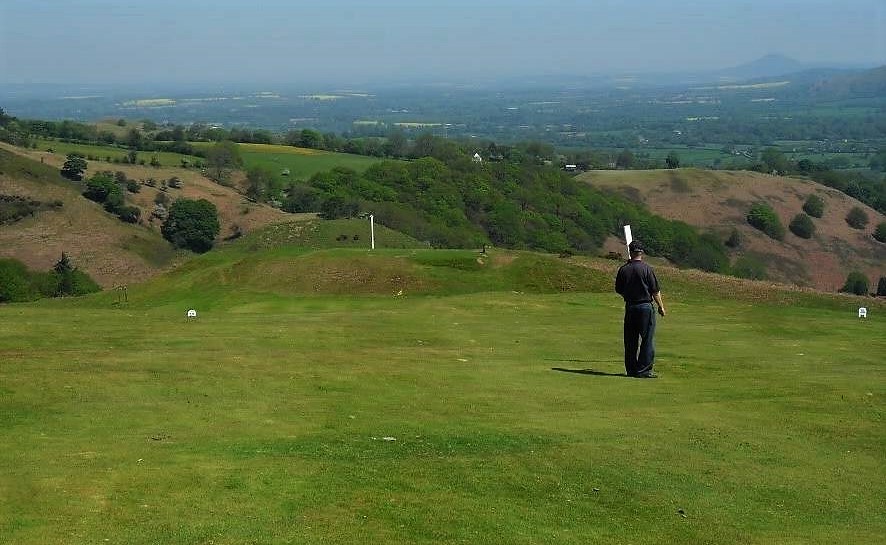
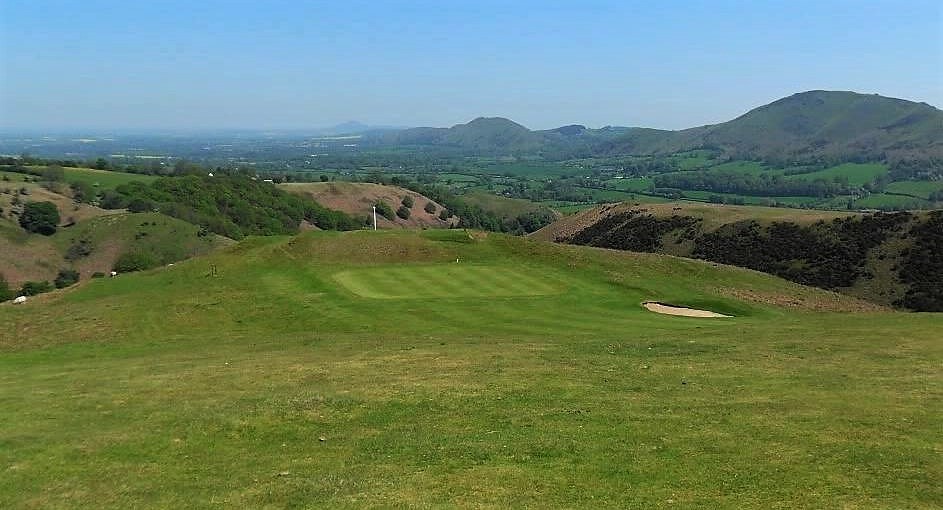
1910 photo of the green.

We now play one of the many drivable par 4s - in the right conditions. Although, one must be quite long to the reach the 7th as it plays well uphill. The green from 8 tee; play is from the left.

One of the best holes on a rather grand front nine is the 8th. The green sits out on a point and is drivable, but any error of judgement or execution will likely lead to a kiss on the card.
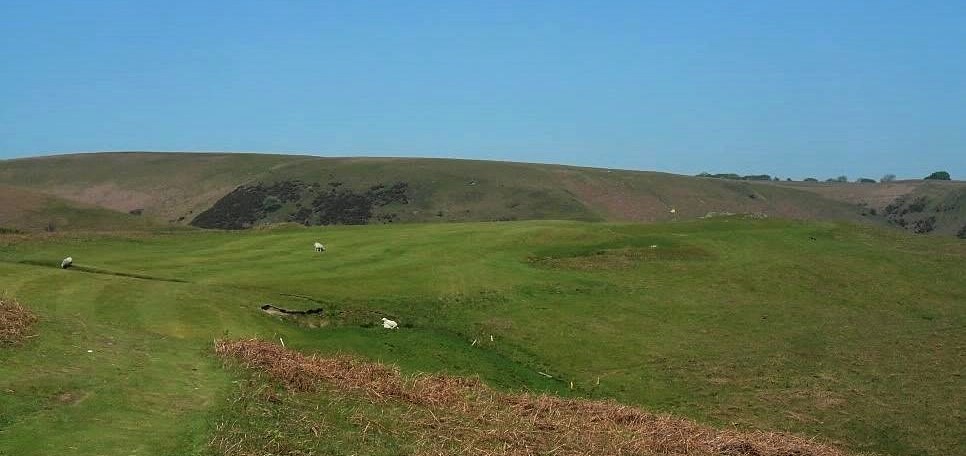
Doc on the look-out.
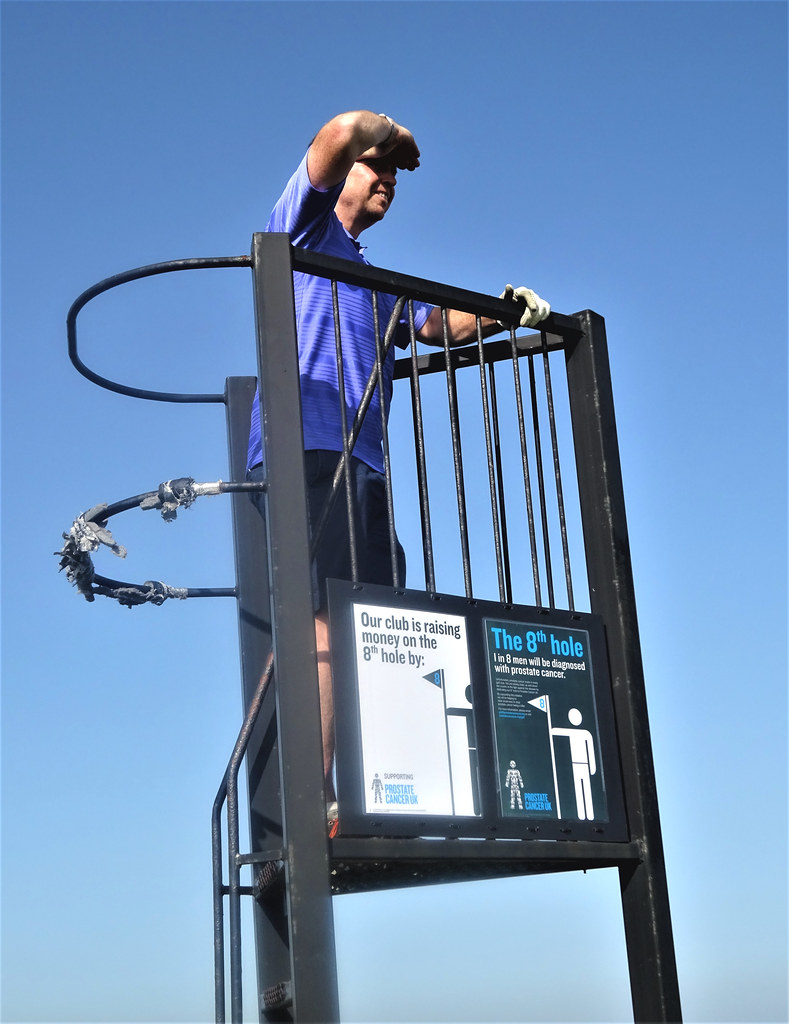
We continue the climb for the front nine closer. The green fits neatly into a saddle on top of the hill. Most will have a short approach, but it is tricky to earn a birdie putt. The horses are handsome.

The back nine is not as compelling as the front, but there are still a few fine holes to be played. As it happens, the 10th is essentially a continuation of the front nine, both in terms of quality and direction. As mentioned previously, there are some holes which offer tantalizing glimpses of the entire hole or parts of the hole leading to the pin - #10 is probably the best example of this. The play is over the previous green toward the marker, but it takes restraint not to take aim at the flag in the distance. The fairway is odd in that it angles away from the green. To earn the best and most visible line of approach requires a lay-up - yet another request to throttle back when all looks so inviting. This is design at its most basic level, yet it is superb. Right of the fairway.
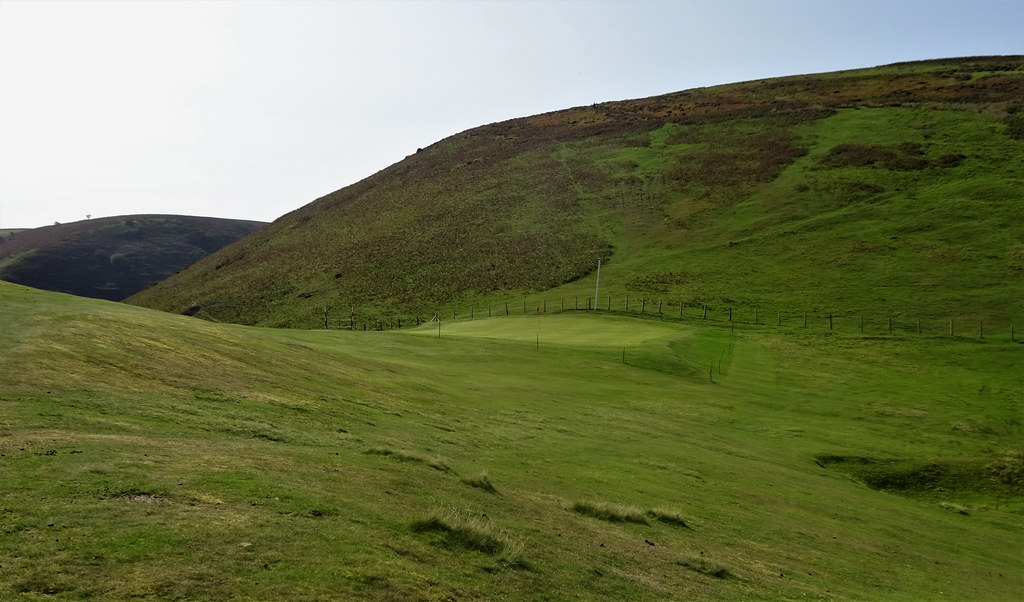
A look at the green from the 11th tee.

The 11th features one of only a few greens on the course which is shaped to present challenges for the approach. In this case, the narrow green angles left to right away from the fairway. There is an added challenge when the bracken is up!

The 8th green is in the background.

The following hole is a brutal par 3 straight up a hill with a green benched into its side. In this day and age many archies would feel compelled to slap a bunker on the low side of the hole, thus removing the bite of the design.


An extremely simple, but highly efficient and effective design.

The green is uncommonly small for such a demanding shot.

A very good hole spoiled somewhat by the out of character trees (which can be seen from many parts of the course!) down the left, the 13th bends left and over what looks like large speed bumps (cops).
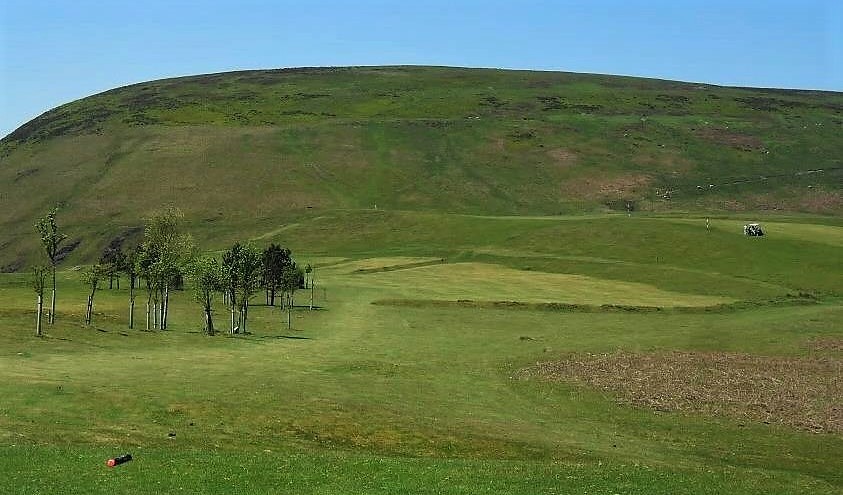
The green is like several at Church Stretton, perched on a hillside, making the correct angle of approach ever so important.

Fourteen turns back on 13 and begins the march home. Unfortunately, there are a few holes coming in which are less than stellar due to extreme elevation changes! However, there is still some wonderful golf to play. Below is the approach to #14.


A crazy downhill hole of 321 yards which is drivable follows - in essence the 15th is a blind drop shot par 4. The drop must be at least 200 feet! The photo is from about 175 yards short of the green which is in a congested part of the course. 6 tee is left of the shack, 5 green beyond the shack, 15 green centre right, 3 green is in the far distance between 5 and 15 greens, 4 green is just right of the 15th green, 16 tee is behind the fence, 4 fairway plays along the path the other side of the ravine, 17 fairway is on the far right...phew. I notice sand was removed from the from the front left pit.

At 247 yards, the knob to knob par 4 16th is a good hole rather reminiscent of Beau Desert's 9th. Looking back at the tee.

As on many previous holes, #17 is routed between old pinching bunkers with the sand removed. The green is stepped just below the fairway to create a blind approach, but the hole is only 323 yards long. Again, anything over-aggressive will result in mountain climbing to find the ball. We now scarper down the steep steps to 18th tee. It is fitting that #18 should be a drop shot par 3 as this is the hole I was expecting to see all the way around. Like the 15th, only a true fan of this type of hole could proclaim its worth.

The double ha haish grass banks short of the green is the best feature of this nutter hole.

Its difficult to pinpoint a recommendation for Church Stretton when there is approximately 700 feet of up and down walking elevation change! There is no question the terrain is far too hilly for the best of golf. Yet, one can't help but admire that the course was routed to be walkable. Indeed, it is often the only way to see Church Stretton as carts would only be safe on dry days. I would also mention that in the truest sense of what makes golf the game it is, Church Stretton is exceptional. The outstanding stretch from 3 through 10 provides all the requirements of controlling ball flight from odd lies, use of imagination, predicting roll out, and thinking about ball placement for angles of attack. It is clear the designers had a firm grasp of these classic principles of design and yet one wonders why these basic tenets are not always in the forefront of design today. This recent trip confirms that I was guilty of underestimating how good Church Stretton is. Courses like Church Stretton are worth seeing because they shed some light on what design was like 100+ years ago and thus offer an alternative approach on where design can go in the coming years. For anyone traveling through the middle Welsh Marches I recommend taking time to play Church Stretton for its obvious beauty and steadfast reliance on simplistic design are surely a recipe for fun. Covering a broader area than is ideal, but easily doable from one hotel location, a Church Stretton, Welshpool and Kington trip could well be the biggest bang for buck in the UK. Darting through the countryside of Shropshire, Herefordshire and Powys is nearly as exhilerating as the courses and the welcome is second to none.
Should one make it to Church Stretton a visit to nearby (halfway to Ludlow) Stokesay Castle is in order. This medieval building is as charming and historic as they come. 1* 2020
Thanks go to J Bills for the old pix!

Ciao